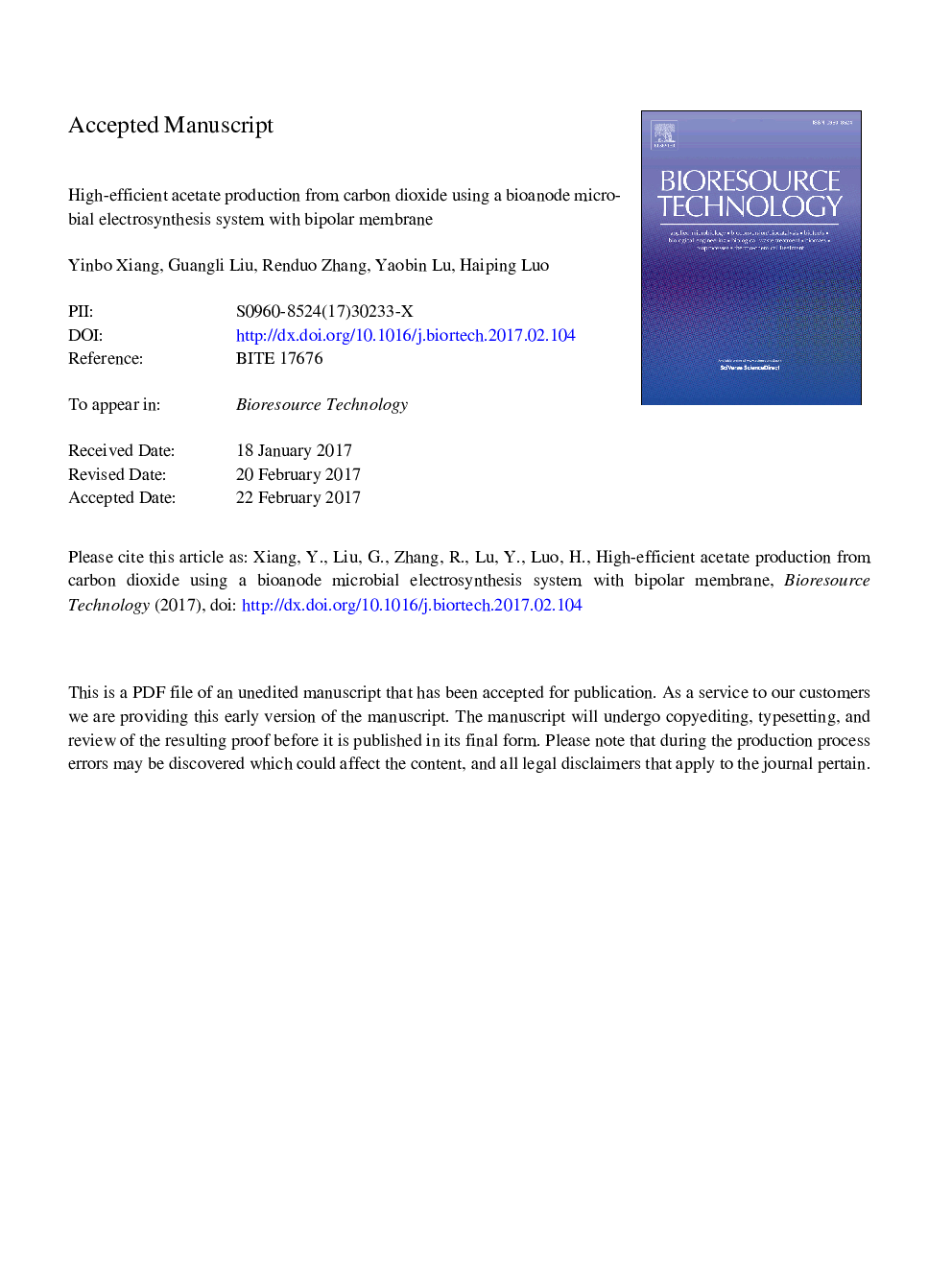| Article ID | Journal | Published Year | Pages | File Type |
|---|---|---|---|---|
| 4997505 | Bioresource Technology | 2017 | 35 Pages |
Abstract
The aim of this study was to develop an efficient bioanode microbial electrosynthesis system (MES) to convert carbon dioxide into acetate using bioenergy from the wastewater. The bioanode MESs were constructed using proton exchange membrane (PEM) and bipolar membrane (BPM) as separator, respectively, and operated under different voltages (i.e., 0.8, 1.0, 1.2, and 1.4Â V). Since BPM could dissociate H2O into H+ and OHâ in situ to buffer the pH change in the chambers, the BPM-MES achieved 238% improvement in cathodic acetate production rate, 45% increase in anodic substrate removal efficiency, and more than five times enhancement in current output, as compared to the PEM-MES. The biomass on the surface of anode and cathode, and the relative abundance of Acetobacterium in the cathode of BPM-MES was higher than that in PEM-MES. Bioanode MES with BPM should be a useful microbial electrosynthesis strategy for acetate production using bioenergy from wastewater treatment.
Related Topics
Physical Sciences and Engineering
Chemical Engineering
Process Chemistry and Technology
Authors
Yinbo Xiang, Guangli Liu, Renduo Zhang, Yaobin Lu, Haiping Luo,
